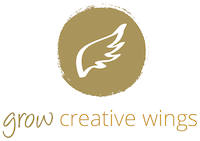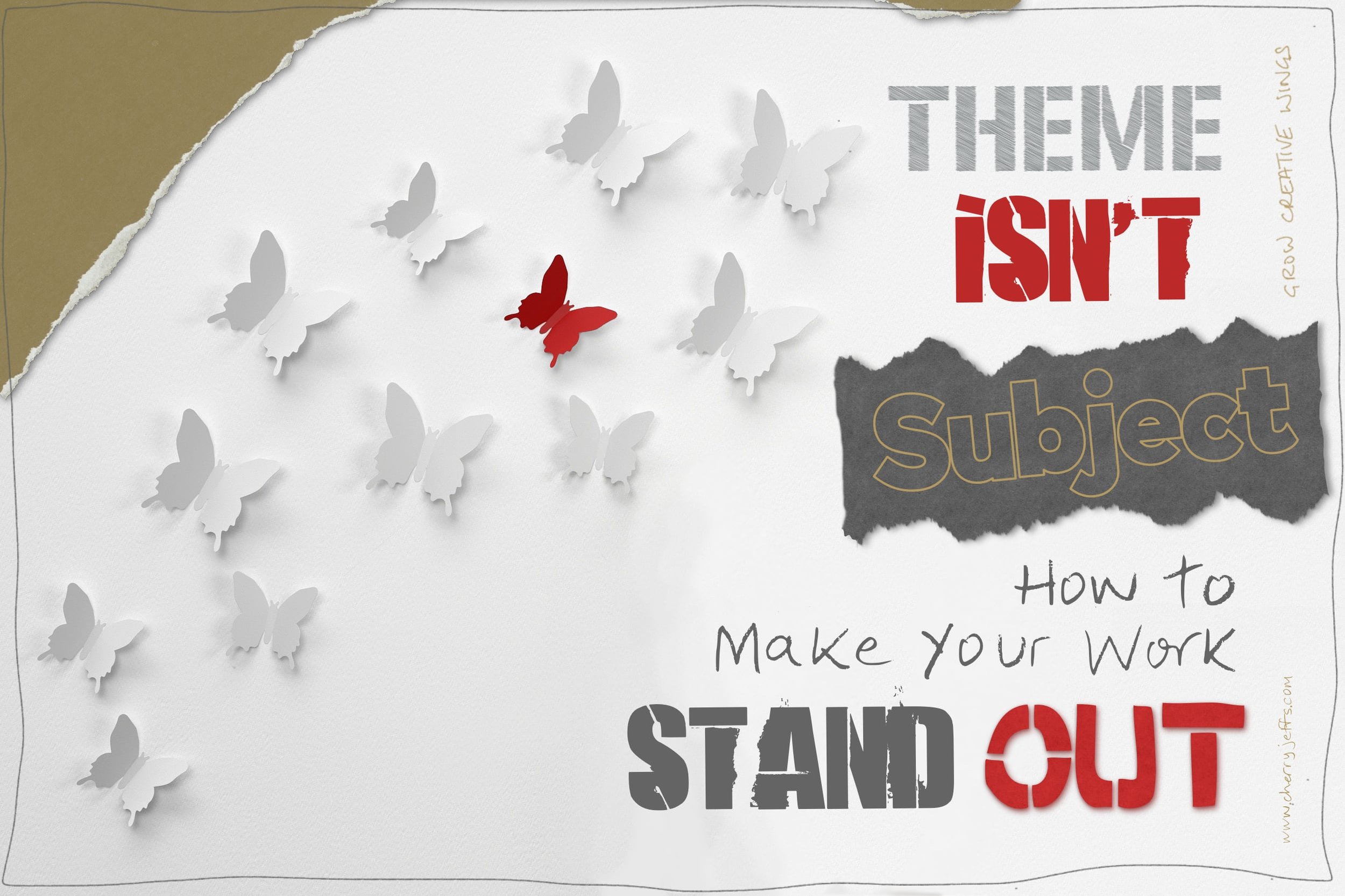Theme ISN’T Subject: How to Make Your Art Stand Out
What’s the theme of your current creative work?
No, I’m not talking about the subject.
Do you even know that the subject isn’t the same as the theme?
Don’t worry if you don’t! I didn’t used to know either. But when I figured it out, it changed the way I approach my work forever.
Stick with me while I explain why the theme of your art is so important (regardless of medium or genre) and it may just do the same for you.
To begin, let’s get clear on the difference between subject and theme.
What is the Subject of an artwork?
The subject of your creative project is literally what it’s OF - at least if you do representational art in any shape or form.
Your subject can be anything - real or imaginary - depending what your interests are: Apples, trees, boats, crowds, castles, dogs, fairies - they’re all subjects.
If your work is abstract, the subject will probably be the point you jumped off from e.g. the shape of leaves against the sky, the play of light on the waves, and so on.
What is the Theme of a creative work?
So your subject is pretty obvious. But what about the theme?
Your theme is the result of using your subject to explore something deeper, more meaningful, and usually more universal.
Say you’re a still-life painter with a thing about apples. You could paint apples in various states of decay as a way to talk about ageing or the passing of time.
So your subject is apples, but your theme is ageing. Got it?
Of course, you don’t have to use apples to explore the theme of ageing. The peeling paint on an old boat, or the crumbling stones of an ancient castle, would work just as well.
This means you can work with your favourite subject matter in different ways to explore different themes: Placing a fresh can of paint next to the old peeling boat would suggest renewal; a close up of a brightly coloured flower emerging from the castle stones would do the same.
What themes can you detect in these apple paintings from the masters?
1. Pommes et Serviette (1879-80) - Paul Cezanne | 2. Still Life with Apples, Pears, Lemons and Grapes (1887) - Vincent van Gogh.| 3. Still Life with Watermelons and Apples" (1771) - Luis Eugenio Meléndez | 4. The Son of Man (1964) self-portrait - René Magritte | 5. Still Life with Apples and Grapes (1879) - Claude Monet
Why Focus on Theme?
Our theme is birthed in our subconscious but, with some digging, we can bring it into our conscious mind.
It's worthwhile doing this digging because understanding your theme is vital for the success of your work both at a personal and professional level. Here’s why:
1. Theme is the map to making your work strong and coherent
Once you know your theme, it’s easy to decide what to include and what to leave out of your piece.
Does that part convey or enhance your theme? If not, what’s it doing there?
Is your theme decipherable by anyone other than you? If not, how can you bring it home a bit more strongly?
It’s possible - and desirable - to bring your theme into all aspects of your piece - the palette you use, the kind of marks you make, texture, light, and so on.
The more you work your theme, the stronger your work will come over.
“As soon as I figure out what my play is about, I type it out in one line and Scotch tape it to the front of my typewriter.
After that, nothing goes into the play that is not on-theme.”
2. Theme makes your work stand out from the crowd and resonate with your audience
Back to that bowl of decaying apples.
As the viewer, I don’t have to like apples for the theme of ageing to resonate with me because it touches me on a deeper, subconscious level.
I too worry about getting old. I worry about my skin wrinkling. I sense that your painting of apples is talking about much more than fruit. Your apples move me.
So getting to grips with the theme of your work might just be the difference between creating a piece of work that resonates with your audience and one that leaves them indifferent.
3. Grappling with your theme can stop you getting creative block
Sometimes a particular theme can cause creative block.
We all have stuff we don’t want to face up to and it’s not surprising that these things surface in our work.
But if our desire to suppress the theme is strong enough, we’ll stop it from surfacing.
So guess what? We get blocked with our work because the theme is struggling to come out and we’re using all our energy to suppress it. The result is a stalemate. Or creative block.
Back to the apples:
I’m painting rotting apples. I hate those apples with all my might. I don’t want to paint those stupid apples any more.
Why? Painting rotting apples is not technically that different from painting shiny apples. And yet...
The rotting apples represent my fear of getting old.
And I don’t want to deal with that.
But once I start to understand what’s going on, I can use those apples to explore my theme and get some closure.
I look for the beauty in the wrinkled skin; it looks so mellow in that soft, late summer twilight. Yes, that feels like something it would be good to paint...
By the time I finish painting those wrinkly apples in the twilight, I’m not only feeling good about the painting, I’m feeling better about my own ageing as well!
Make Your Theme Intriguing
There will also be times when we know all too well what our theme is, but it feels too strong.
We don’t want to show THAT in our work! We don’t want to get blocked by suppressing the theme so we need to treat it with some subtlety.
We have to find a way to convey the theme that is universal without punching our audience in the face!
This subtlety is our emotional safeguard, but it’s also what makes the work intriguing - what makes people want to keep looking at it, coming back to it. This contributes to the benefits we talked about earlier: it makes your work stronger, more coherent and it helps people resonate with it.
What is the theme of your current work?
So now you know why theme is so important for your art, look at your current work and see if you can figure out what the theme is.
(I’ve used painting as an example but it can be any kind of creative work.)
How does your theme connect to your subject?
How could you make it resonate more strongly?
Just want the eBook?




